How smartwatches work
Our guide to the technology actually running your smartwatch
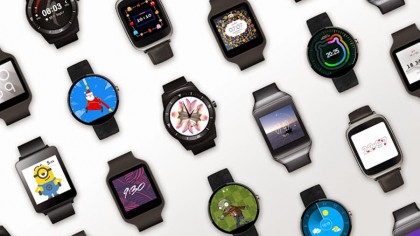
How smartwatches work
After one of the more drawn-out Apple product launches we've seen, the Apple Watch has finally arrived. But the requirement to have at least an iPhone 5 smartphone to pair it with in order to gain full functionality will no doubt spoil the game for some. Still, there'll be no shortage of takers as the Cupertino giant aims to stamp its authority on the fledgling watch market. However, as we'll see, the wider wearables economy is only just getting started.
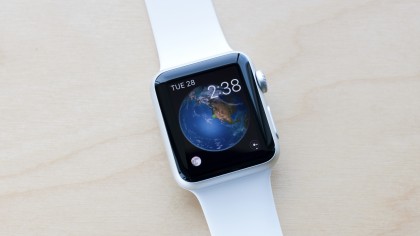
Inside Apple Watch
Apple announced to the world last September that its Watch would feature a new sealed 'system in a chip' (SiC) design called the S1. However, market analysts ABI Research recently ripped the top off the S1 to take a peek at just what's going on inside.
Somewhat surprisingly, the insides looks more like a conventional electronic circuit board, filled with function-specific chips from third-party vendors. The key component is a new Apple ARM-class processor called the APL0778, but that's reportedly coupled with 8GB of flash storage from Sandisk/Toshiba, plus 512MB of DDR memory from RAM brand Elpida.
Basic wireless tech (802.11n Wi-Fi and Bluetooth 4.0) comes from Broadcom's BCM43342 chip, there's also an accelerometer/gyroscope sensor chip from STMicroelectronics, plus a couple of other chips from NXP Semiconductor.
At this stage, little is known about that APL0778 processor, but you can get an idea of its power consumption from the teardown performed by the team at iFixit. The iFixit engineers found a 3.8V/205mAh Lithium-ion battery, which takes up close to half the available real-estate inside the Watch casing and which Apple rates to 18 hours of run-time. By comparison, the iPad Air 2 has a battery with around 8650mAh capacity. The Watch battery is also smaller than the 300mAh battery powering the Moto 360.
So how much does it cost to make an Apple Watch? While Apple will no doubt dispute the figures, market analysts IHS recently came up with some numbers – US$83.70 (approx AU$113.82, £53.59), including US$2.50 (approx AU$3.40, £1.60) in manufacturing costs. Given Apple sells the base-model 38mm Sport for US$349 (AU$499, £299), that's a decent profit, if those cost figures are correct. However, IHS says its numbers don't include inherit setup costs such as R&D, intellectual property licensing or logistics.
While Apple, at the time of writing, is yet to outline how many Watches had so far been sold, market analysts KGI Securities believe as many as 2.3 million were snapped up in the first week, likely putting it in pole-position on the wearables leaderboard. Another forecaster, CCS Insight, reckons Apple could ship as many as 20 million watches by the end of 2015, while 32 million by year's end has even been suggested.
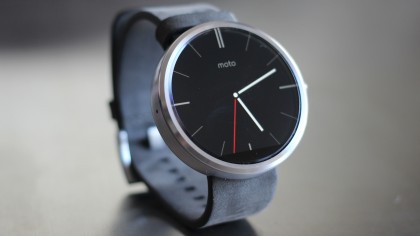
Android Wear gets Wi-Fi
Having Wi-Fi has been seen as one of the differentiators between the Apple Watch and devices powered by the Android Wear OS from archrival Google. However, Google is fighting back with news announced the week of the Apple Watch launch that an upcoming Lollipop/5.1 update for the wearable platform will deliver the ability to link Android watches to Wi-Fi networks for the first time.
That's really interesting, because it means the limitation of wireless functionality to Bluetooth only in these devices has been software rather than hardware-related in many cases. It's been reported that the Motorola Moto 360, Sony SmartWatch 3, Samsung Gear Live and the sleek-looking LG Watch Urbane already have Wi-Fi hardware on-board that should get activated once the new OS update appears. However, more curiously, the ASUS ZenWatch and early LG G Watch series models do not.
There's been no official reason as to why Android Wear left out the Wi-Fi code or why some watch makers chose to include Wi-Fi hardware (even though the OS loaded onto the devices at the time couldn't use it) and some didn't. The ability to now receive notifications via Wi-Fi removes the need for an active smartphone near-by, although, it remains to be seen what effect having Wi-Fi activated will have on device battery life.
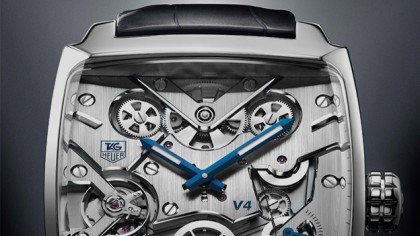
Traditionals embrace tech
While much of the wearables market is dominated by the likes of Apple and Google, traditional watchmakers are not standing idly by.
The luxury watch market is about to join the fray with news that Swiss giant Tag Heuer has inked a deal with Google and chipmaker Intel to create a new smartwatch. While no-one has sighted the watch yet, or even its name, rumours are already swirling that we should expect a November launch this year and a price tag of US$1400 (approx AU$1,740, £900).
The internals of the watch haven't been released but it is known to be running an Intel system-on-a-chip (SoC) and Android Wear OS. Intel's contribution could be either it's popular Atom-class CPU or an updated version of the lesser-known Quark x86 CPU, earlier demonstrated in the Intel Galileo boards. The watch itself is rumoured to be based on the Tag Heuer Carrera design.
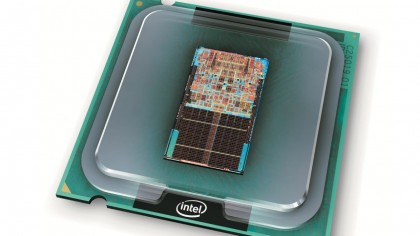
Microcontroller or microprocessor?
When it comes to the brains inside smartwatches and fitness bands, you'll hear two terms thrown about, often interchangeably – microprocessor and microcontroller. Depending on the model you buy, you'll have one or the other, possibly both – but they're not the same thing.
A microprocessor is another name for the 'central processing unit' or CPU you'll find it your laptop, PC or smartphone. Microprocessors typically have clock speeds of above 500MHz but rely on external chips to supply memory (RAM) and long-term (flash) storage. Microprocessors can handle many different applications at once and are usually controlled by an operating system, such as Windows or Android.
A microcontroller unit (MCU), on the other hand, is quite different – it usually has a clock speed of less than 100MHz (0.1GHz) but carries its own internal RAM and flash storage for storing programs. This on-board storage is also quite minimal – at most you're likely to get no more than 1MB of flash and RAM combined. However, unlike a microprocessor, a microcontroller doesn't require an operating system. When you program an MCU, you're coding the device itself, sometimes described as 'bare-metal programming', for a single function.
Microcontrollers are generally used in what are known as 'embedded' applications, built into everything from cars to washing machines and fitness bands. But as we've seen, they also make it inside phones and watches, handling specific peripheral functions.
Basically, anything with an operating system will be powered by a microprocessor.
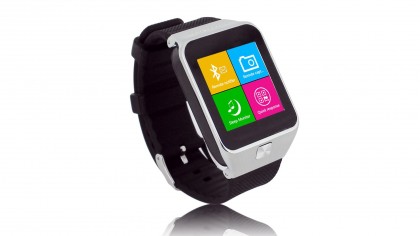
MediaTek MT6260
Online shopping site eBay is awash with budget smartwatches at the moment, with many often powered by a 'system on a chip' (SoC) from Taiwanese chip company MediaTek.
One such popular example is the MT6260, based on old ARM7-class CPU technology from chip designer ARM, the team responsible for just about every smartphone and tablet on the market. Word on the street is this chip, with its 32-bit processor, built-in 3G (GSM) connectivity, Bluetooth and Wi-Fi, sells for a paltry US$3 (approx AU$4.08, £1.92) each.
The processor itself clocks in at 364MHz and it's become a popular choice amongst designers in Asia not just for smartwatches, but basic-function mobile phones as well – not to mention 'watch phones', like the ZGPAX S28, which can make GSM calls on its own thanks to a built-in SIM card slot and sells for under US$50 (approx AU$67.99, £32.02) online.
There are even plans to reverse-engineer and 'open source' the chip for the maker community – check out the Fernvale Project, which aims to create a shield adding it to the popular Arduino series of DIY boards.
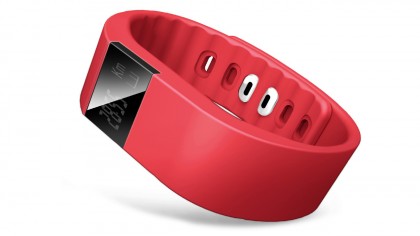
Smartwatches under $20?
In September 2014, market analysts Gartner predicted we would see Android-based smartwatches drop below $30 during this year. We haven't got there just yet, but that hasn't stopped retailers in Asia from selling fitness band-style smartwatches extremely cheap.
Some of the designs, such as the TW64, look strangely familiar (did someone say Fitbit Charge?), and sell on eBay for under US$15 (approx AU$20.40, £9.61). The chip behind the TW64 is the QN9021, a 32MHz ARM Cortex M0+ microcontroller with built-in Bluetooth 4.0 LE (low energy) radio made by Silicon Valley company, Quintic, which was recently bought by NXP Semiconductor, formerly a division of Dutch giant Philips.
The chip itself has pretty modest specs with 64KB of program and 128KB of data flash, but for Bluetooth-connected fitness and sports trackers, that's really all you need.
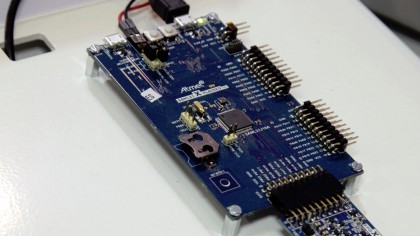
Decades of battery life
Smartwatch demand in 2015 is expected to grow 500%, according to the latest forecast by market analysts IDC, which will drive demand for new processors that run on even less power than the MT6260, QN9021 and others of their generation.
Chip maker Atmel is better known as the supplier of chips for the extremely popular Arduino series of DIY microcontroller boards used to make everything from Christmas lights to robots and drones. But in late-March, the company announced a new chip family with an extremely-low-power consumption called the SAML21.
Deep-sleep standby power for this chip is measured at just 200-nanoamps (0.0000002-amps). Even on a tiny 80mAh battery, that's equivalent of 400,000 hours' run time – no wonder the battery life of this little chip is being described as 'decades'. According to Atmel, this currently makes the SAML21 the lowest-power consumption 32-bit ARM core in the world – and ripe for a slew of new wearable devices.
The SAML21 is another ARM Cortex M0+ chip, this time running at up to 48MHz (for now) and will be aimed at the IoT market. But given we're seeing the same class of microcontroller unit featuring in Fitbit clones, it's likely to be only a matter of time before fitness bands start delivering battery life measured in weeks, if not months, thanks to this chip.
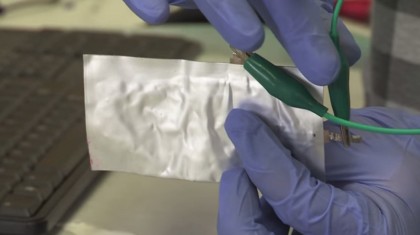
New aluminium-ion battery
While Lithium-polymer remains the battery technology of choice for everything from cars to watches, it's been that way for much of the last ten years. However, in early-April, US scientists announced a breakthrough in a long-term project that could revolutionise the way we use batteries.
The team from Stanford University has developed a battery made from Aluminium and graphite that can be charged more than 7,500 times, but the real kicker is that it can be charged in just 60 seconds. At best, current Lithium-ion batteries can be charged up to 1000 times; Lithium-polymer up to 500. The new battery has a voltage of 2.0-volts, but is even being seen as a replacement for the millions of the AA and AAA-size batteries used every day.
It's still early days and plenty of development work still needs to be done, but combine Atmel's SAML21 chip with the Aluminium-ion battery and you have a potential processing block likely to last longer than you or I will.
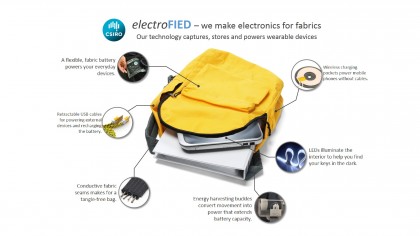
Flexible batteries
Other countries such as Australia are also in the mix when it comes to thinking up new wearable technology. The Australian government agency's Advanced Energy Storage team has developed what it calls 'FIED' – Flexible Integrated Energy Device. The platform has three parts – a new flexible, bendable battery; energy-harvesting technology to charge it; and washable fabric made from conductive fibres that can electrically connect the various wearable components together.
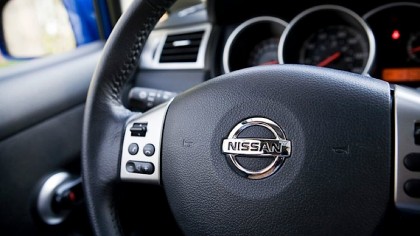
Watch where you use it
And finally, it's long been illegal to use a mobile phone while driving in many countries. However, if you're thinking you can tap away on your shiny new Apple Watch while driving, safe in the knowledge that it isn't a mobile phone, you might just want to plan a re-think.
In Australia, for example, a recent report suggested that police in a particular states would deem it a fine-worthy act if a motorist used a smartwatch while driving.
However, as watch makers continue to blur the lines between traditional and smart watches, could the act of simply looking at the time at the wrong time eventually result in a fine? Like most recent battles between technology and the law, it'll probably be the courts that will eventually have to decide this one.